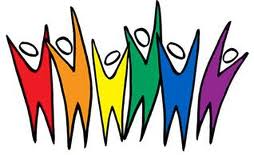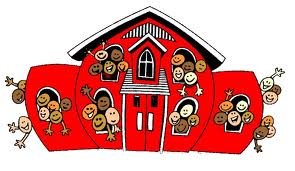Building school community on social justice grounds
December 2nd, 2013 | Published in Education, Guest posts

Guest post by Dr Jenny Ricketts
I am a school psychologist, and fourteen years of my work have been at a Catholic coeducational secondary college (Years 7 to 10) in a disadvantaged area in the western suburbs of Melbourne.
This school was established on social justice principles, and is culturally diverse. More than 75% of students and their parents/guardians were born overseas, representing around fifty countries and thirty home languages.
Given this diversity it seems reasonable to expect diverse ideas about school community, education, and their connection to each other. Some years ago I set about having conversations on these topics with students, families, and staff of the school, and completed a PhD on this research in 2011.
My thesis, Project Connect, was designed to follow social justice principles of inclusiveness, collaboration, and power-sharing while at the same time building understanding of how to apply those principles to enrich the school as an educational community.
Seventy-six students, thirty parents/guardians, and fourteen staff participated in interviews or focus groups. A sample of their ideas reflects the importance of school welcome for building school community, and a sense of education as collaborative and potentially transformative. [Note that names have been changed to protect anonymity.]
School welcome is the lynchpin
Being invited to events at the school, knowing people, feeling at home, and being able to build relationships create a sense of school welcome, and this is the foundation of school community:
- They [parents] feel welcome because they have all these things that go on in the school and parents are allowed to come. [African student, Year 9]
- It helps them [families] if they actually know people. [Anglo student, Year 7]
- If they know each other, there’s the relationship and then it’s easier for them to come and feel at home. [Anglo student, Year 8]
Additionally, positive comments about the school in the wider community help create a sense of belonging:
- It makes them [parents] feel proud of the school when they hear things that we’ve done, like when people come to the restaurant and say what they’ve read in the paper [about the school]. When people say: ‘Oh, your children go to that school. That’s good.’ Then my parents like it. [Vietnamese student, Year 10]
Staff can promote welcome through hospitality and warmth. They can build a culture of inclusion by showing open hearts and creating space. Ultimately, the measure of school welcome is the proportion of the school community, across cultures and circumstances, who are known, feel valued, and actively participate.
Education is collaborative
 The following ideas about education include seeing it as collaboration between staff, students, and families to build bridges, share information, work together, and support the global role of parents/guardians.
The following ideas about education include seeing it as collaboration between staff, students, and families to build bridges, share information, work together, and support the global role of parents/guardians.
- We’re trying to build bridges, really. I think that’s what we’re saying. That’s what the link is. That’s what we’re hoping to build. [Bree, experienced teacher]
- I have to know what’s going on [at school] because it makes a parent feel secure. I have to be responsible at home for what happens at school and elsewhere. [Ante, Croatian father of two]
- We need to find out what the school needs. It’s knowing the school rules and obligations for the children and the parents so no-one is embarrassed or at a disadvantage. [Shishela, Indian mother of two]
- It’s hard to help because we don’t understand the system. [Amou, African mother of five]
- It’s best to work together as much as possible and come together, not second-hand. [Gina, Lebanese mother of four]
- I tell them: “Homework, helping out, time out. I have to put it so they remember.” [Majak, African father of six]
An educational community is a network in which staff, students, and families collaborate in promoting education within and beyond school.
Education is potentially transformative
Education is also seen as transformative, making a difference to people’s lives now and in the future.
- They say I should take every opportunity the school offers to meet people and learn about the world and do good things for others. [Indian student, Year 8]
- We talk things over as a family. We share food together. We work together, do things together. We tell them
 education is important. You only get one shot at it and you can’t afford to get behind. [Marcella, Chilean mother of three]
education is important. You only get one shot at it and you can’t afford to get behind. [Marcella, Chilean mother of three] - I think they [families] value education. What they contribute is valuable in school and it makes a difference. It’s helping us help their children. [Colin, experienced teacher]
Putting ideas into practice
Education, in the sense reflected here, is about more than academic achievement. It is about building shared ideas between staff, students, and families, and doing so in ways that embrace diversity and respect difference. It is about building school community on social justice grounds.
One example of the influence on day-to-day school practice is the approach to issues such as cyber-safety. Rather than bringing in a ‘cyber-safety expert’ to lecture people who speak multiple languages and can’t follow what is being said because the interpreters can’t keep up, we now organise family-friendly discussion evenings. The experience of having an english-speaking ‘expert’ lecture families challenged us to find alternative approaches. Our community needed a new format.
Discussion evenings are built around hospitality, and involve small groups who speak the same language sharing their questions and ideas about the topic at hand – cyber-safety, homework, study skills, drug use, or any number of other possibilities. Small groups then pool their ideas.
Ideas are often similar across groups, although unusual ones also arise. In relation to cyber-safety, for example, families at this school (and no doubt most others) worry about the time children spend online, and how to encourage other activities, monitor sites visited, get children to switch off, take breaks, and meet friends face-to-face. One father explained that he decides the time allowed online, and when it is up, he simply disconnects the device or takes it away. He might then go for a walk – perhaps with his child.
There is remarkable creative energy in these discussions, and the ideas, whether creative or standard, are owned by those involved. This sense of ownership is much more evident than if the material, even very similar material, is presented as a lecture.
My work on Project Connect has made it clear for me that the tradition of this school, the aims and design of my project, and the ideas of the school community, all converge around principles of social justice. In pursuing our aims of building connections between staff, students, and families in ways that are inclusive, collaborative, and power-sharing, I believe we are also contributing to broader and longer term goals of social equity.
I would welcome your comments…Jenny Ricketts


 education is important. You only get one shot at it and you can’t afford to get behind.
education is important. You only get one shot at it and you can’t afford to get behind. 

